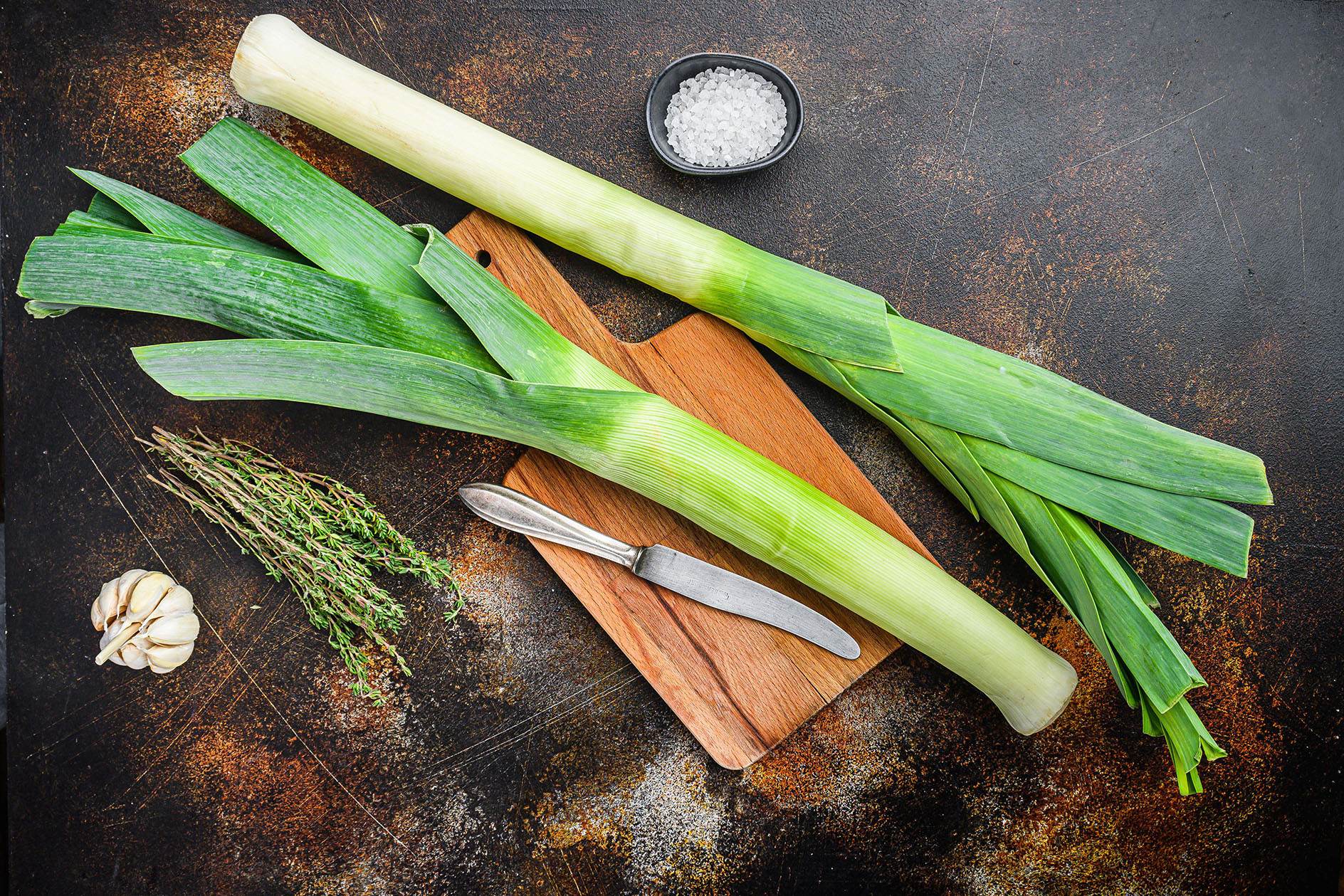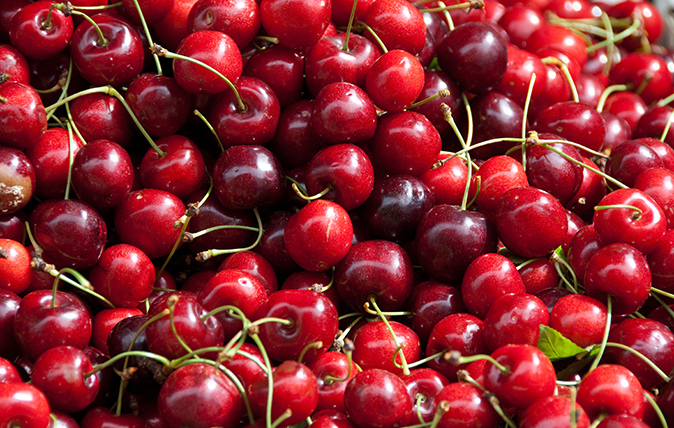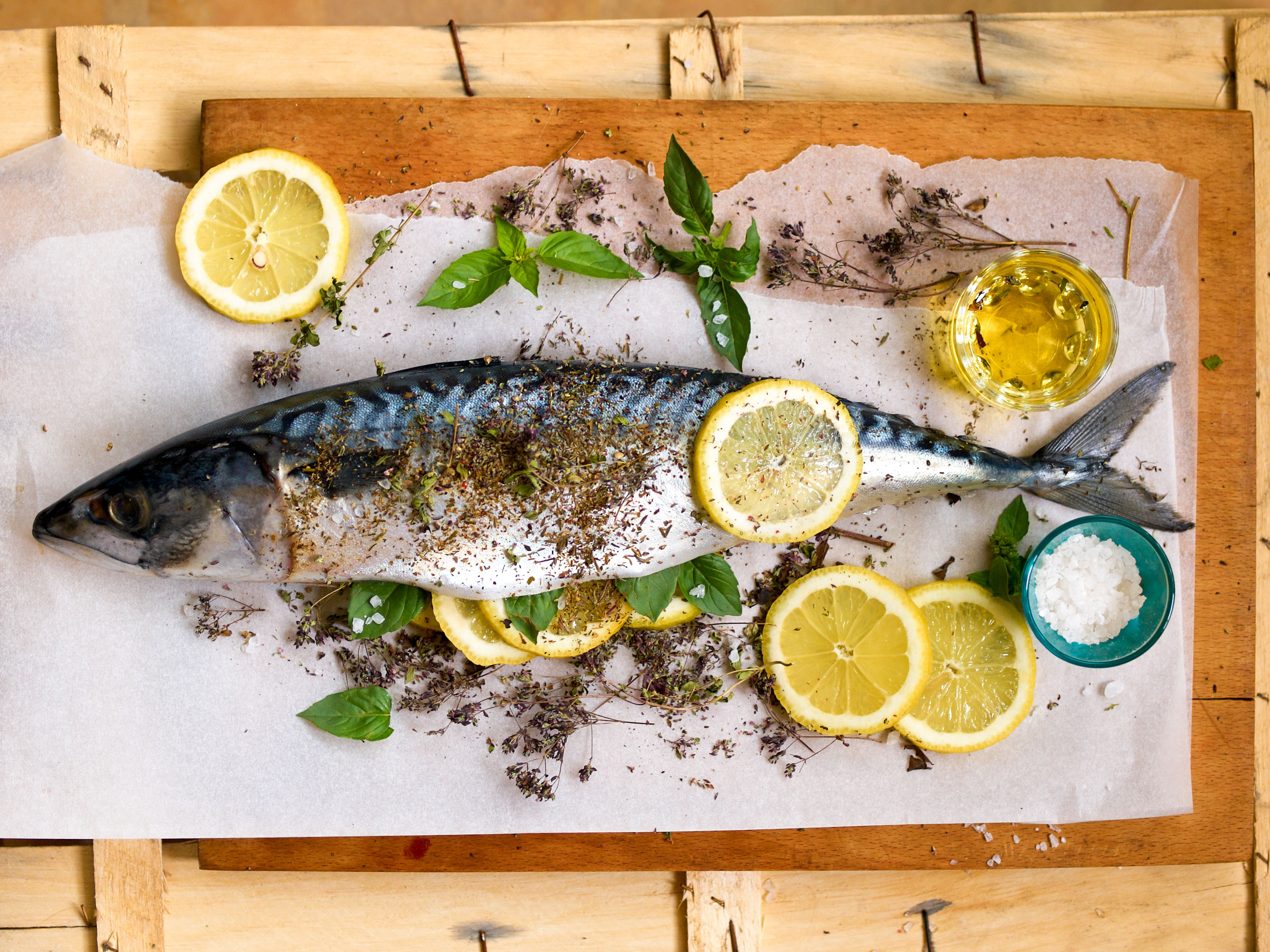How to make the simple leek into a sumptuous supper, the Tom Parker Bowles way
Leeks can spice up a simple soup or make a fine accompaniment to foie gras. We take a look at a recipe which is as simple as it is delicious.


‘There’s nothing base about the leek,’ wrote Tom Parker-Bowles in last week’s Country Life. ‘This is the most subtle and elegant of alliums, a slender flaneur to the onion’s squat heft, bookish rather than bold,’ he adds.
‘Garlic might shout and holler, but the leek is mild, sweet and discreet, happy to linger in the background, offering unstintingly steadfast support. It has little time for pungent histrionics, instead merrily submitting to butter’s warm embrace.’
They became the national symbol of Wales due to their role in a sixth-century battle: the troops wore leeks in their helmets at the urging of St David in order to tell each other apart, and they went on thrash the invading Saxons.
You’ll find them in dishes across the globe, from Scotland’s cock-a-leekie soup to Afghani dumplings and Nepalese curries. But cooking them can be simplicity itself: ‘Leeks braise better than they boil,’ advises Dorothy Hartley in Food in England. Tom suggests another route: ‘My mother simply puts them, chopped, in a dish with a mass of butter and whacks them in the Aga for 30 minutes, whereupon they melt into the sweetest submission.’
The only thing to worry about is the gritty dirt that can get trapped between the leaves as they grow. ‘To avoid a gritty mouthful, slice them into rounds and soak them in a bowl of water, giving them a good stir, then drain well on kitchen paper,’ suggests Tom. ‘If you need them whole, remove the tough green leaves (they’re great in stock), make a vertical split about halfway down the centre and run them under the cold tap as you fan out the layers.’
The following recipe is a classic, from a classic tome: Simon Hopkinson’s Roast Chicken and Other Stories. ‘It is the simplicity of a dish like Leeks Vinaigrette that makes it so good,’ writes Simon.
‘Embellishments such as a soft boiled or poached egg can be nice, or an anchovy or two could be considered, but that is a matter for you.’
Sign up for the Country Life Newsletter
Exquisite houses, the beauty of Nature, and how to get the most from your life, straight to your inbox.
It is easier to make a large quantity of this dressing than a small one, advises Tom. And don’t be afraid of producing a big batch: it will keep in the fridge for a few weeks.
Recipe: Leeks Vinaigrette
Ingredients
- 16 leeks, about thumb thickness, trimmed and washed, with about 1inch of green on each
- 2 tbspn smooth Dijon mustard
- 2 tbspn red wine vinegar
- Salt and pepper
- 300-450ml (1/2-3/4 pint) groundnut oil, or other flavourless oil
- 2 hard-boiled eggs
- 1 tbspn snipped chives
Method
Put the leeks into fast-boiling, well-salted water and cook until tender. Drain and allow to cool naturally.
Put the mustard, vinegar and salt and pepper in a blender. Add 4tbspn water and blend together. With the motor running, pour in the oil in a thin stream until homogenised. If you think the dressing is too thick, thin with a little more water. The ideal consistency is that of thin salad cream.
Slice the leeks lengthways and arrange in a serving dish, cut-sides uppermost. Drizzle with the dressing and grate over the hard-boiled eggs.
Sprinkle with the chives and serve with some crusty bread.

Tom Parker Bowles's guide to eating seasonally: British produce to try in July
How to eat seasonally in July.

How to cook Dover sole with shrimps and tomato, as recommended by Tom Parker-Bowles
Dover sole is a fish that can be kept as simple as can be, yet adding a little extra from

How to make Tom Parker Bowles' mackerel with potatoes and bay
Tom Parker Bowles admits he’s a terrible fisherman — and that’s why he loves mackerel. Not only are the easy
Country Life is unlike any other magazine: the only glossy weekly on the newsstand and the only magazine that has been guest-edited by HRH The King not once, but twice. It is a celebration of modern rural life and all its diverse joys and pleasures — that was first published in Queen Victoria's Diamond Jubilee year. Our eclectic mixture of witty and informative content — from the most up-to-date property news and commentary and a coveted glimpse inside some of the UK's best houses and gardens, to gardening, the arts and interior design, written by experts in their field — still cannot be found in print or online, anywhere else.
-
 ‘It had the air of an ex-rental, and that’s putting it politely’: How an antique dealer transformed a run-down Georgian house in Chatham Dockyards
‘It had the air of an ex-rental, and that’s putting it politely’: How an antique dealer transformed a run-down Georgian house in Chatham DockyardsAn antique dealer with an eye for colour has rescued an 18th-century house from years of neglect with the help of the team at Mylands.
By Arabella Youens
-
 A home cinema, tasteful interiors and 65 acres of private parkland hidden in an unassuming lodge in Kent
A home cinema, tasteful interiors and 65 acres of private parkland hidden in an unassuming lodge in KentNorth Lodge near Tonbridge may seem relatively simple, but there is a lot more than what meets the eye.
By James Fisher